Ducks and flamingos come together...
Hello readers! As you’re no doubt already aware, WWT Slimbridge is home to a vast array of ducks, geese and swans, as well as all six species of flamingo. In this diary instalment, Phoebe and Paul thought it would be a good idea to team up and collaborate, bringing together some facts about the the similarities that can exist between flamingos and their (distant) duck cousins.
So what’s the difference between the wildfowl and these tall pink things, and what is the same? It was once thought that flamingos and other species of wildfowl (the ducks, geese and swans) were very closely related. This was one of the reasons why Sir Peter Scott wanted to gather the six species of flamingo at “the Wildfowl Trust” as WWT used to be called. We now know that flamingos and wildfowl have travelled down very different evolutionary paths, but even so, they do similar things, in similar habitats and they can look (with a bit of squinting) quite similar too. The posh science for this would be convergent evolution- where unrelated organisms develop similar features because they end up in similar environments.
So what are these features that can appear in both wildfowl and flamingos?
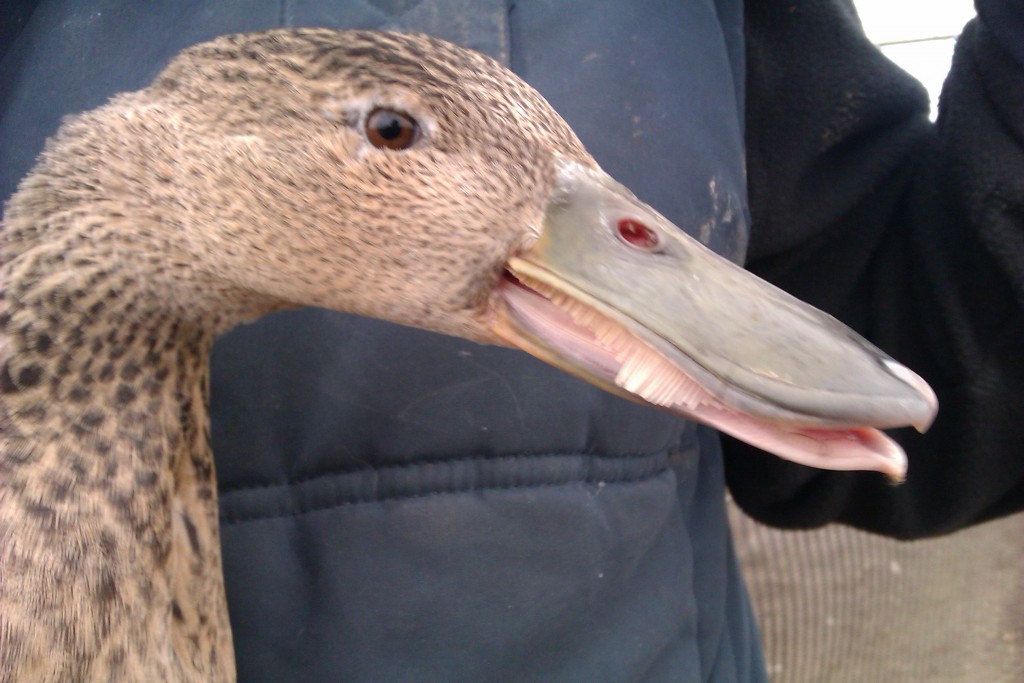
The lovely fringe of lamellae on the edge of this female Cape shoveler’s beak is a similar filtering mechanism to what is seen in the beaks of flamingos. Shoveler are what we call a 'specialist' bird, using their specialised beak to sieve tasty morsels from the water that other ducks couldn't get. They eat similar food to the flamingo; algae, plant material, crustaceans… and just like the flamingo they collect their dinner by pumping water across their in-built lamellae net using their tongue, scooping up lots of tasty treats.
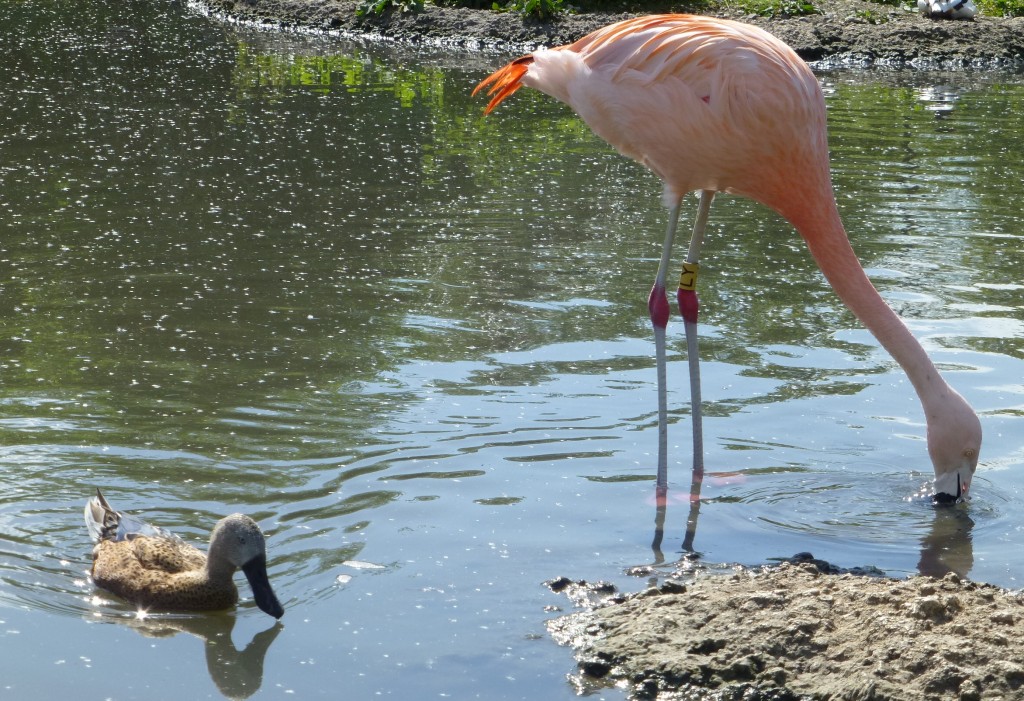
Two red filtering birds… spot the difference, it is quite tricky ;-)
If you look at the water coming out of from the edge of the flamingo’s beak and from the shoveler’s beak you can genuinely see how clean it is. Their filtering technique is very efficient, and by feeding in this efficient manner the birds can help to reduce the competition they experience from others and hence “rub along” with other species at feeding time without undue competition.
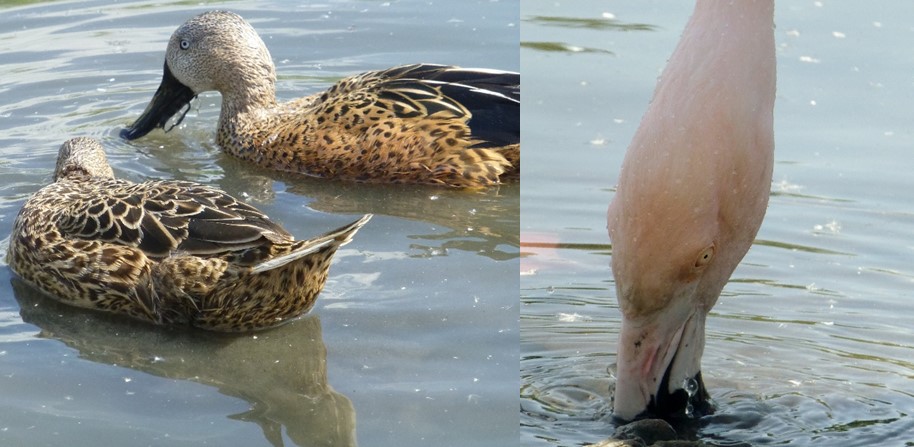
Not all flamingos feed the same. Some flamingos are extremely specialist, and some species of flamingo are very general in their feeding style.
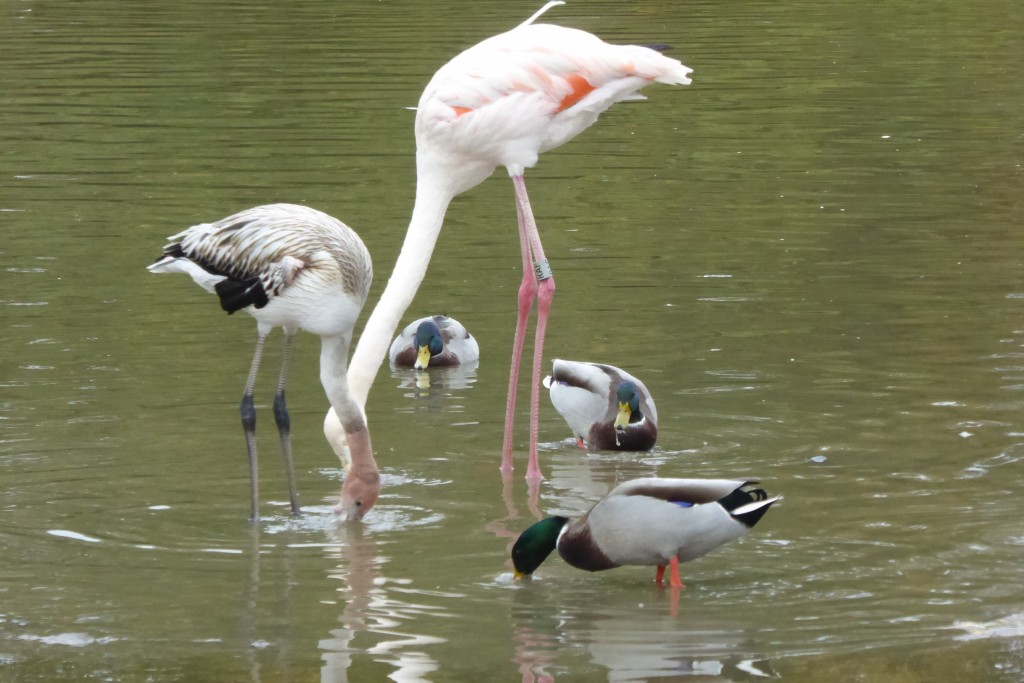
The similarity between these mallards (perhaps the most successful of all wildfowl species) and the Caribbean flamingos towering over them is evident in this image where they are both feeding at the same level. Both species can forage in both shallow and deep water by either shovelling along the bottom and filtering in the water column, or up-ending the length of their necks to the bottom. They can also eat a wide range of animal and plant material (both try and hoover up grain from Slimbridge visitors!)
This is the very opposite of the shoveler example. The shoveler's very sophisticated feeding mechanism is more akin to the lesser flamingo or the James’ flamingo (below), whose beaks are designed to filter feed for very precise bits of food in a very precise manner.
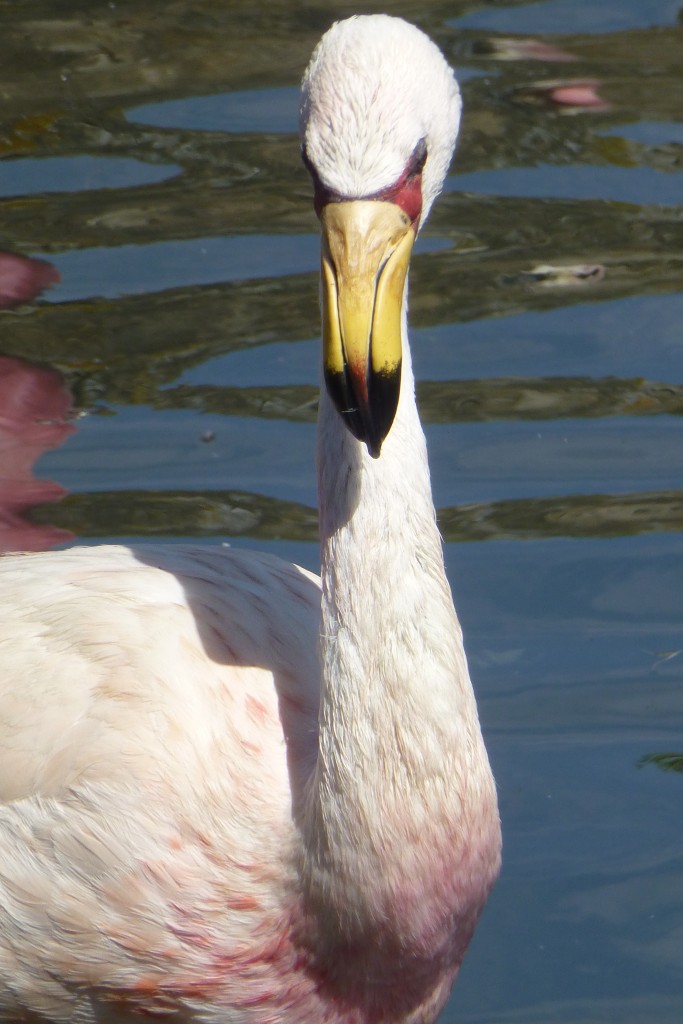
Special beaks are us! A very special upper mandible (or jaw) in the James’ flamingo has a very precise filtering system for the most tiny and microscopic ingredients, just like the shoveler.
The other obvious similarity between ducks, geese, swans, waders and flamingos are their feet. So just what are these webbed feet and why do they have them?
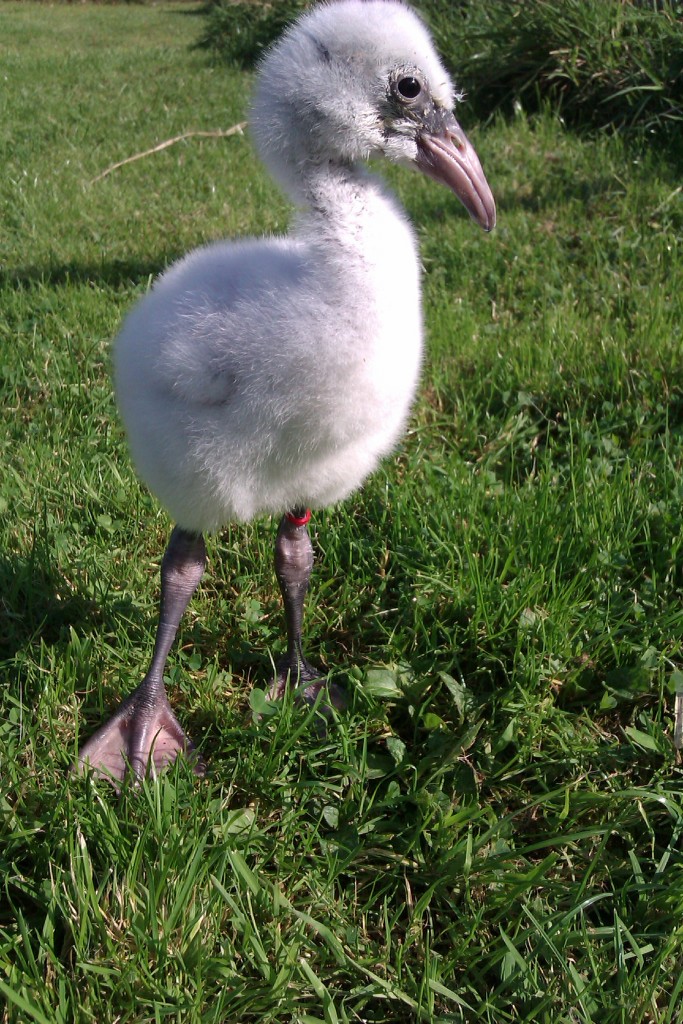
Both ducks and flamingos have webs between their three front toes. They can all use them for swimming, paddling, up-ending and wading. The most basic reason for webbed feet is to spread the bird’s body weight and prevent it from sinking into soft ground. So when evolution finds a design that works, it will stick with it and use it across many different species.
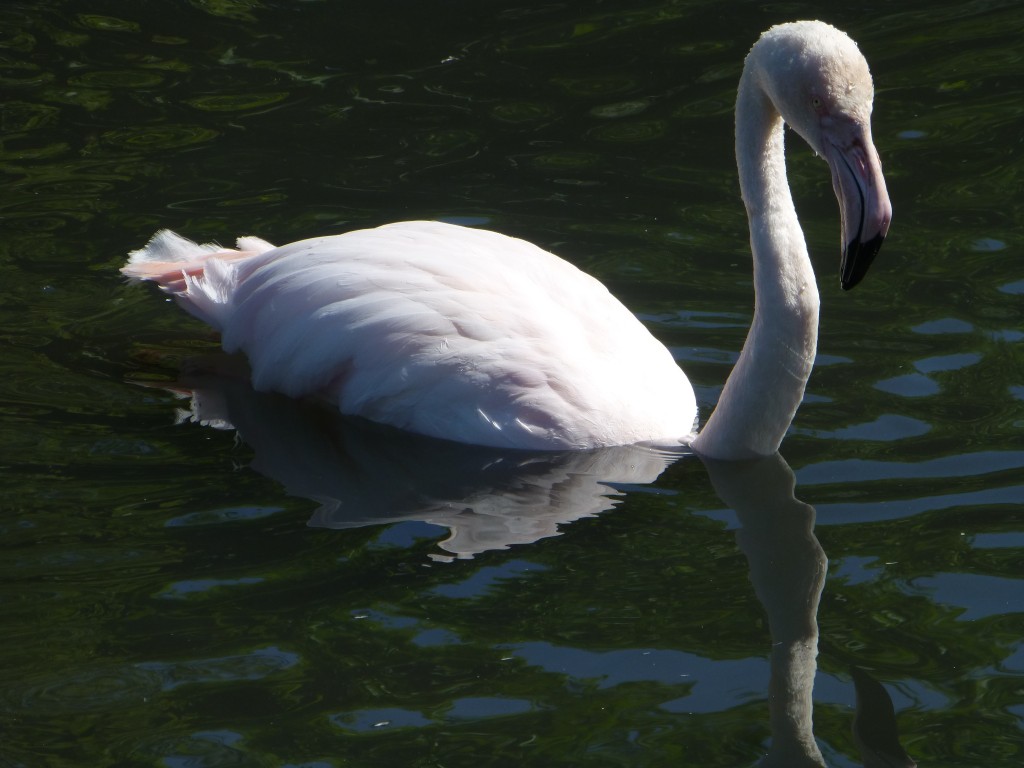
Going for a swim. Ducks and flamingos paddle in a similar way (only flamingos have to tuck their legs underneath themselves first!) Flamingos will swim out to deeper water to find food if they must, and their webbed feet are vital propulsion.
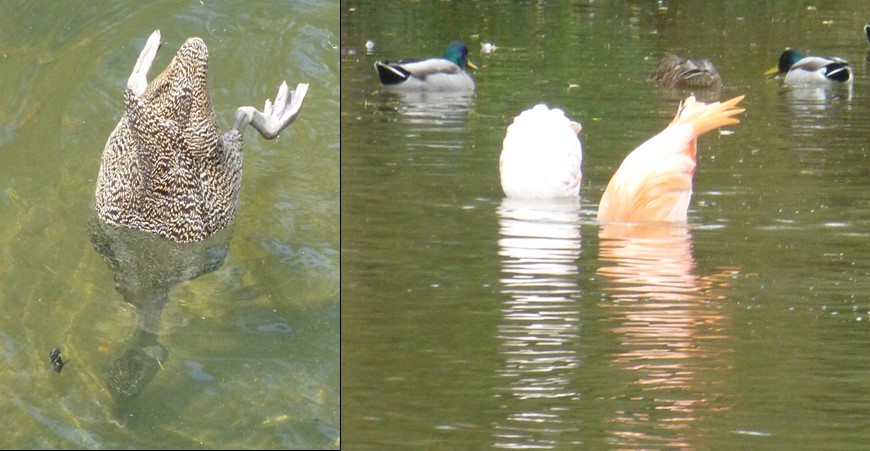
Bottoms up! Wildfowl and flamingos will up-end and feed with their bums in the air; an extremely useful feeding behaviour to use if food is hidden in deeper water. Dabbling ducks are too large and buoyant to dive well, and neither do flamingos! They both have to stretch down to find hidden food, but at least flamingos can benefit from a long neck!
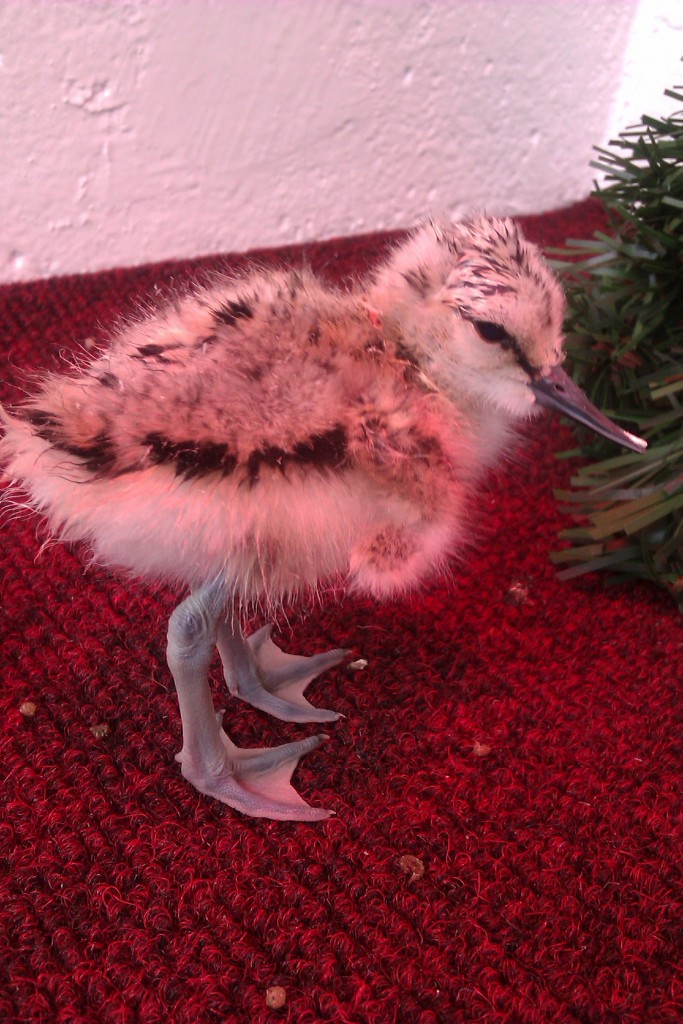
Agitation! Webbed feet are also a very powerful tool for water displacement. You can often see flamingos stood in both deep and shallow water, stamping away 'nose to foot' like their lives depend on it! Churning up muddy or silty water can often reveal delicious morsels such as bloodworms (midge larvae.) During the winter, shoveler will group together on lakes and circle in large groups. In suitable numbers, a group of circling shoveler can create a vortex of water which sucks morsels up from the bottom of the lake. The whole group can then filter feed in the water column. Avocets like the little chick above, will stamp around in shallow water in order to bring tasty morsels well within reach of their fantastic bills!
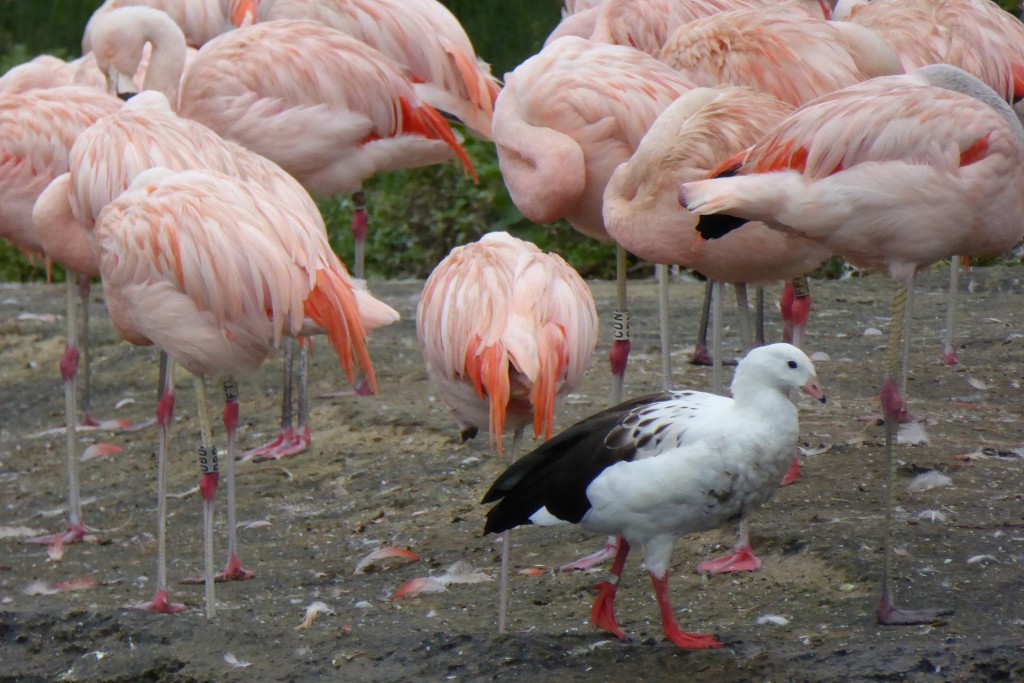
Off for a stroll. Some species of wildfowl, like this Andean goose are built for walking. Flamingos also spend a lot of time on their feet (or sometimes foot!) and will cover great distances when foraging and feeding. All flamingos feel their most content in large groups where sheer numbers allow them to forage with their heads down far and wide. As such they are very sensitive to change and disturbance, relying on their security to feed from floor level.
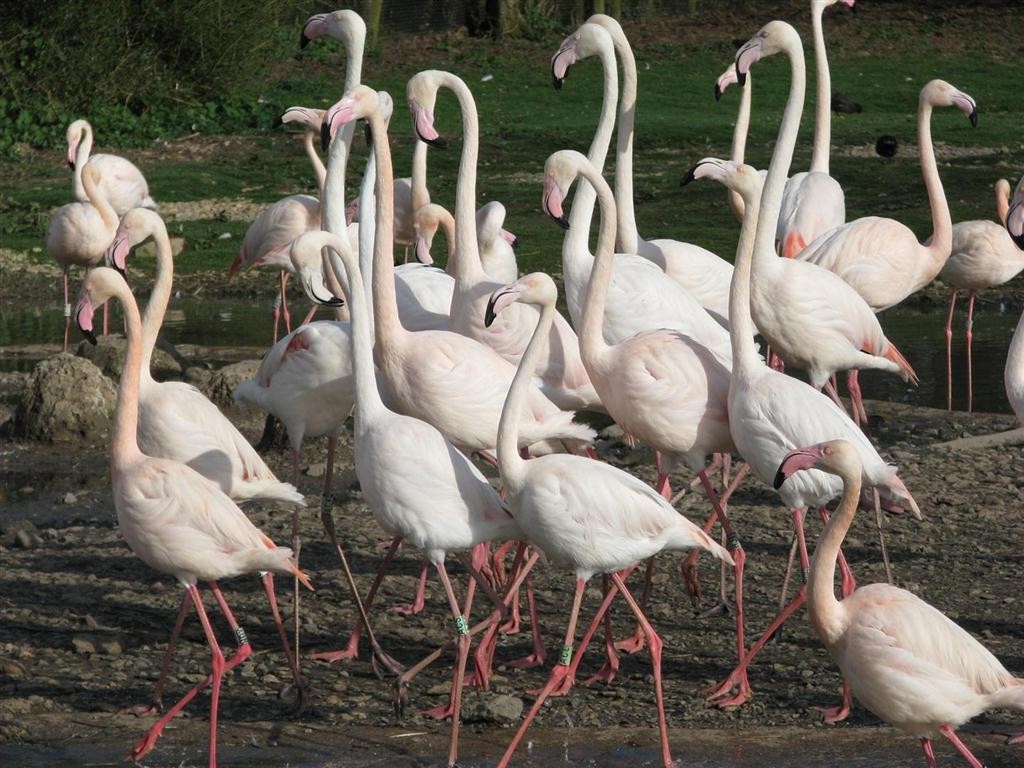
Flamingos partake in a walking courtship display known as "marching," where they all walk in close proximity, head down, vulnerable. Despite those long legs, they're very precise on foot. Due to their exceptionally long lives, these webbed toes have got to last a good 50+ years! Walking also plays a vital part in Andean goose courtship, where the pair march side by side whistling and honking, showing off their striking orange legs.
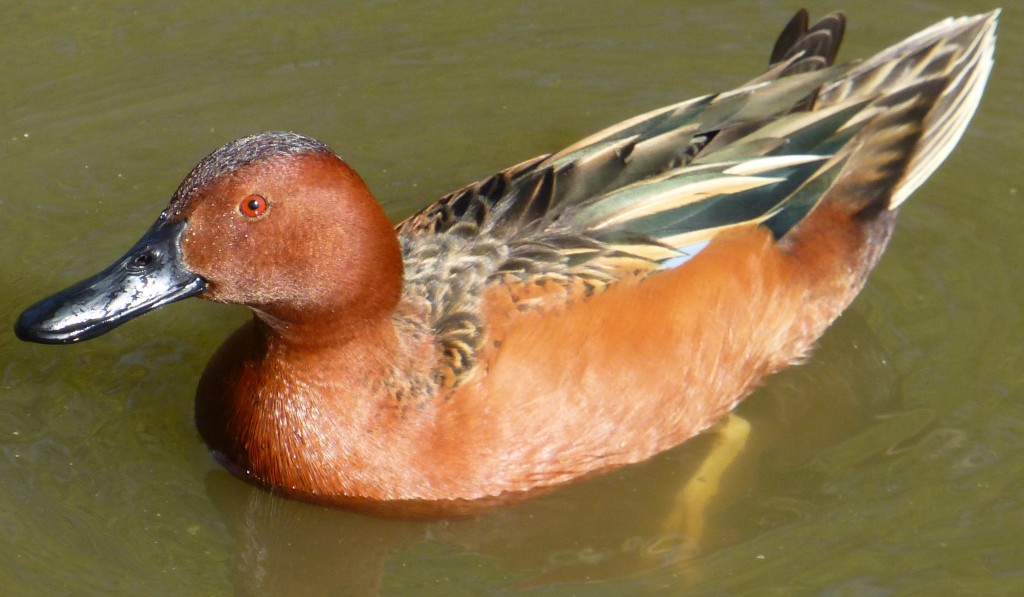
And finally, what about bright plumage colour? It is an obvious feature of both ducks and flamingos (especially in wildfowl) at this time of year. Both flamingos and ducks will change their plumage in and out of the breeding season. Ducks become brighter and exhibit their best plumage during the autumn and winter, whilst flamingos; drained of energy from being parents over the summer, look paler. They both need to look their best in advance of their breeding season, depending on their location of native origin. Red, pink, yellow or orange in nature is termed an “honest signal”. Both in ducks and flamingos, these pigments are difficult to manufacture and cost a lot of energy to make. After the breeding season and after rearing their progeny, both wildfowl and flamingos can afford to let their hair down. Most species will join large flocks where they either moult, migrate, or fatten up for the winter. In these situations birds in life-long partnerships don't need to impress one another, and those who are not have an entire winter to endure before they're back in the dating game...
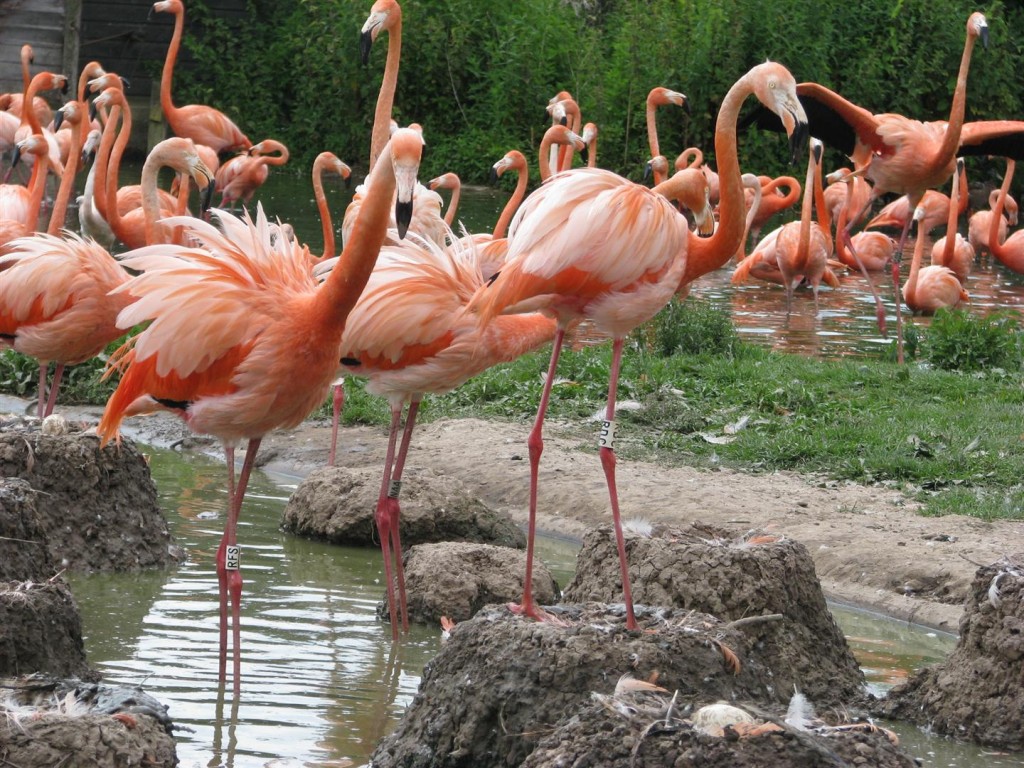
The majority of wildfowl and all flamingos moult in the same way, losing all of their flight feathers at the same time. They become completely flightless during the "eclipse," whilst new flight feathers are coming through. Both species live near water for this very reason- it offers an easy escape method during the moult. It could be said that the way in which these birds grow, develop and use their feathers is also very similar. Once they have re-grown their flight feathers, they will come back into colour like this Argentine ruddy duck below.
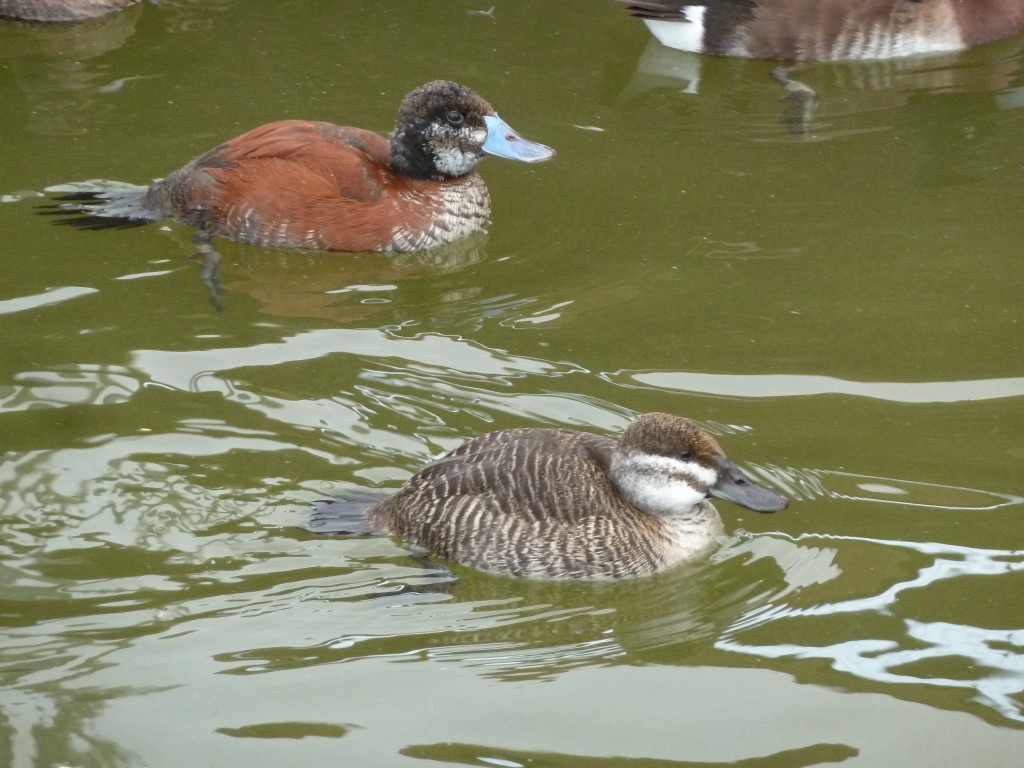
We hope that you have enjoyed this joint piece and hopefully you have been given a new insight into the biology and natural history of wildfowl and flamingos. Perhaps you will be able to spot some of the similar duck and flamingo features on your next visit to WWT Slimbridge? Happy bird watching!

